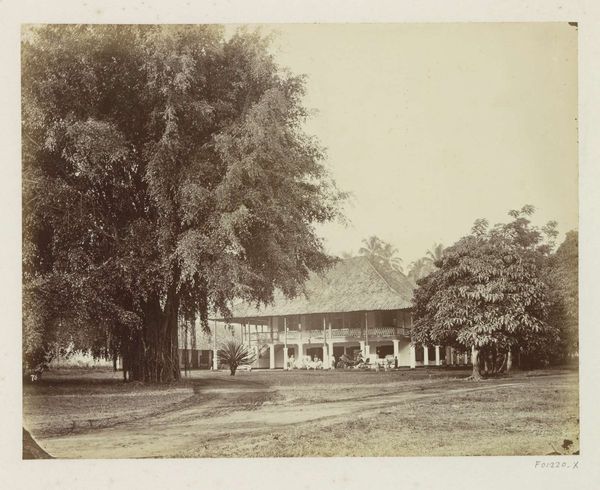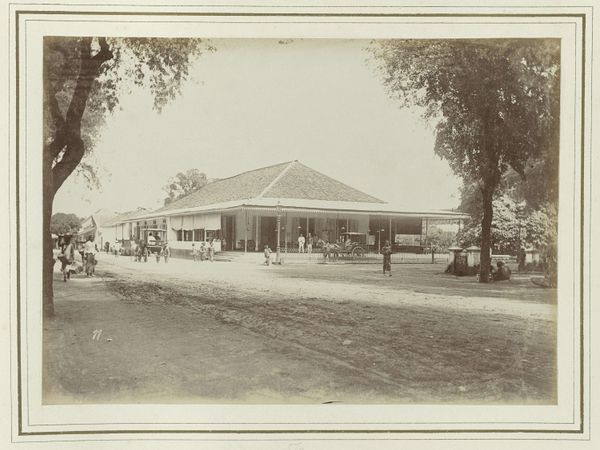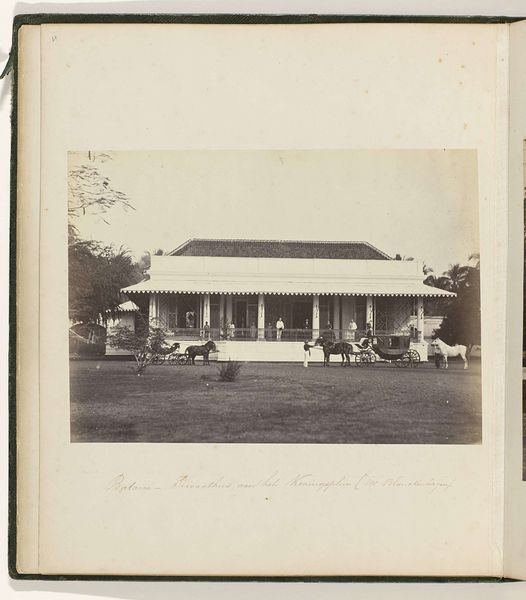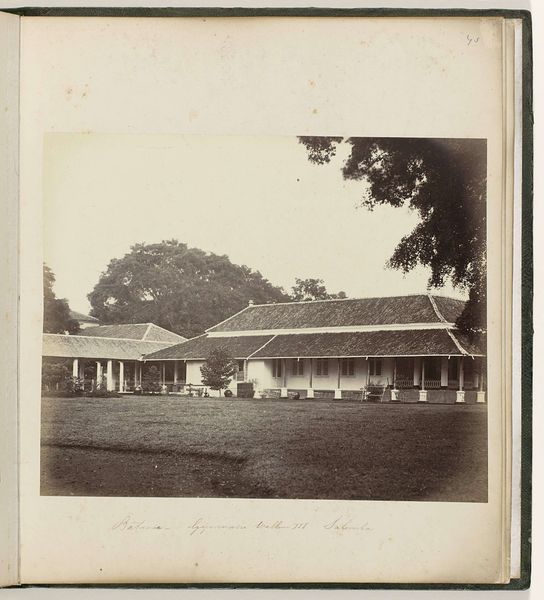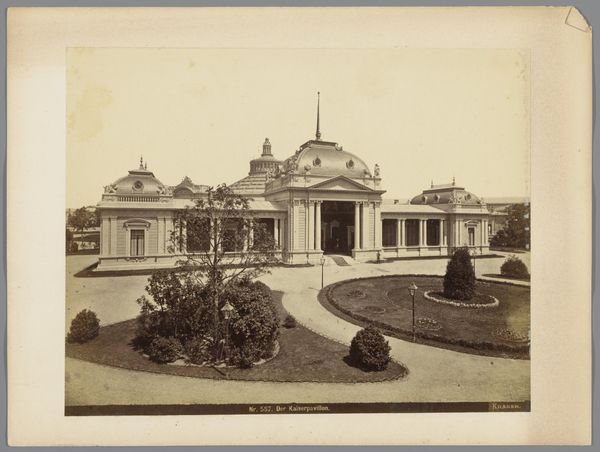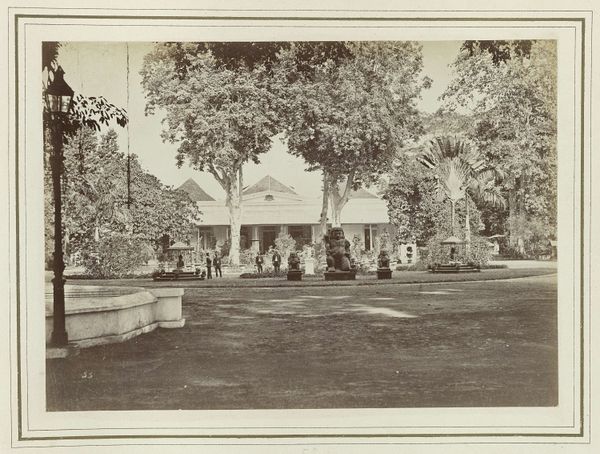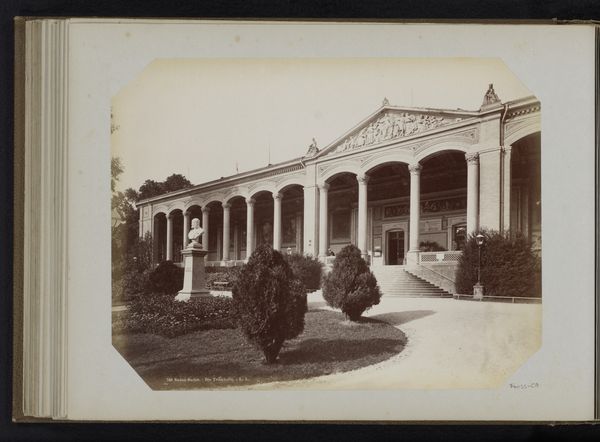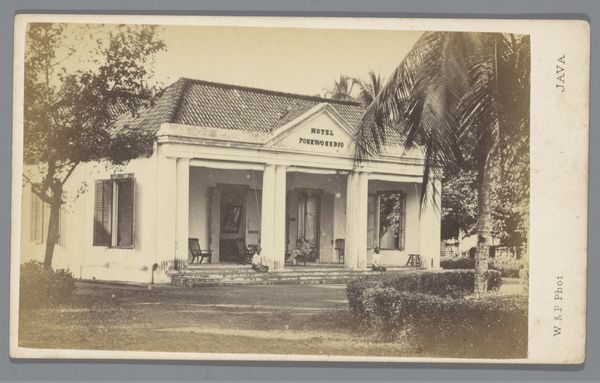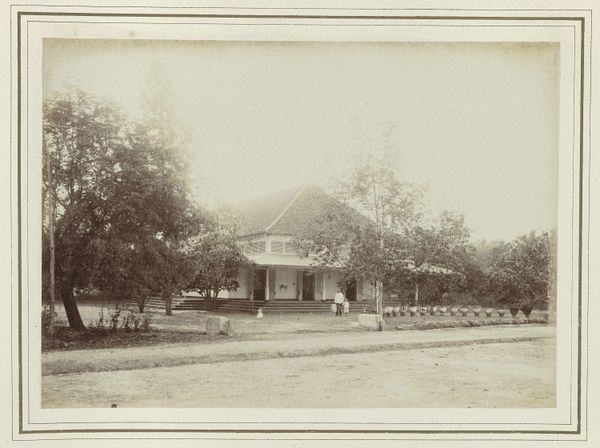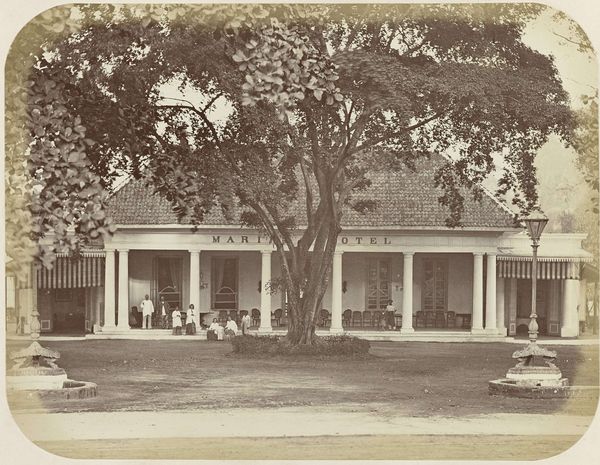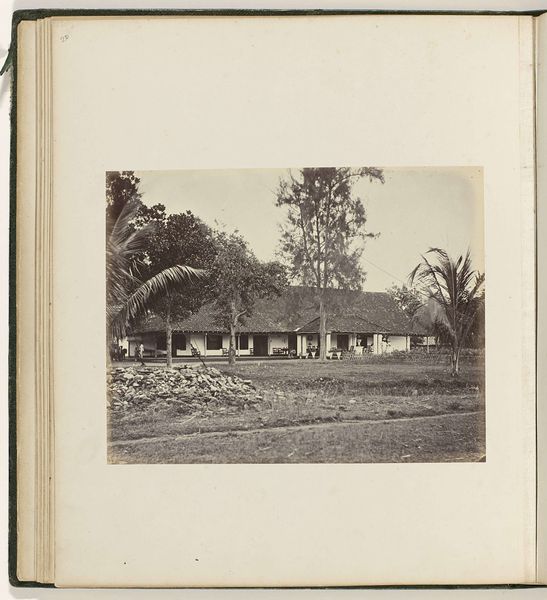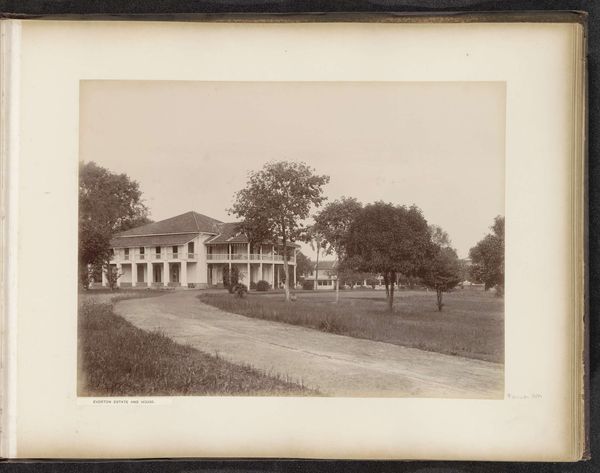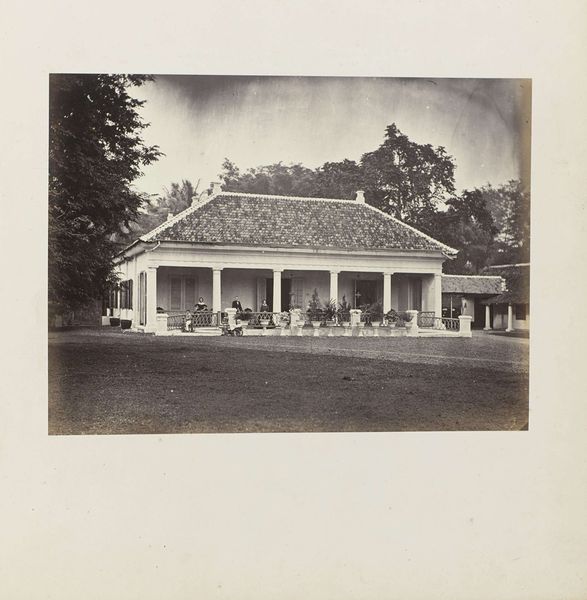
Gebouw voor algemene informatie op de Wereldtentoonstelling van 1873 te Wenen c. 1873 - 1875
0:00
0:00
photography
#
landscape
#
photography
#
cityscape
Dimensions: height 199 mm, width 254 mm
Copyright: Rijks Museum: Open Domain
Curator: Josef Löwy captured this architectural photograph, entitled "Gebouw voor algemene informatie op de Wereldtentoonstelling van 1873 te Wenen," likely between 1873 and 1875. Editor: What immediately strikes me is its melancholy, the sepia tones give the structure and landscape a faded grandeur, an echo of a bygone era of imperial exhibitions. Curator: Indeed, Löwy was a prominent photographer in Vienna, and these World's Fairs were potent sites of social and economic exchange, but also displays of national and colonial power, reflecting Vienna's central role in the Austro-Hungarian Empire. We see in this image how architecture was strategically employed to project images of progress, stability, and global reach. Editor: The structure is rendered with strong attention to lines and the rhythm of its repeated arches, typical for architectural photography. I’m particularly interested in how the light catches the building’s ornamentation, which provides detail that prevents it from becoming flat or documentary in nature. The symmetry and proportion suggest an aesthetic of ordered rationality. Curator: The perspective, and placement within a curated landscape also speaks volumes. Who had access to these spaces? And to what extent did these events serve to reinforce social hierarchies and celebrate industrial expansion, with its known impacts on labor and environment? Editor: Well, without people in the image, its primary visual weight is granted to the architecture. What's really interesting, though, is how that formal architectural precision contrasts with the organic shapes of the trees—creating tension, yet harmony at the same time. Curator: Seeing this today, prompts us to reconsider the narrative around progress. How have these ideas and aspirations influenced our contemporary experiences with exhibitions, global gatherings, and the urban landscapes that hosted them? Editor: Considering both its form and context offers multiple readings. Perhaps this work transcends mere documentation; it is not only a photograph *of* something, but a complex composition inviting layered interpretation. Curator: Precisely, this photograph provides both visual documentation, and a point of entry for critical examination, acknowledging progress is never neutral, and has profound and uneven social implications.
Comments
No comments
Be the first to comment and join the conversation on the ultimate creative platform.
